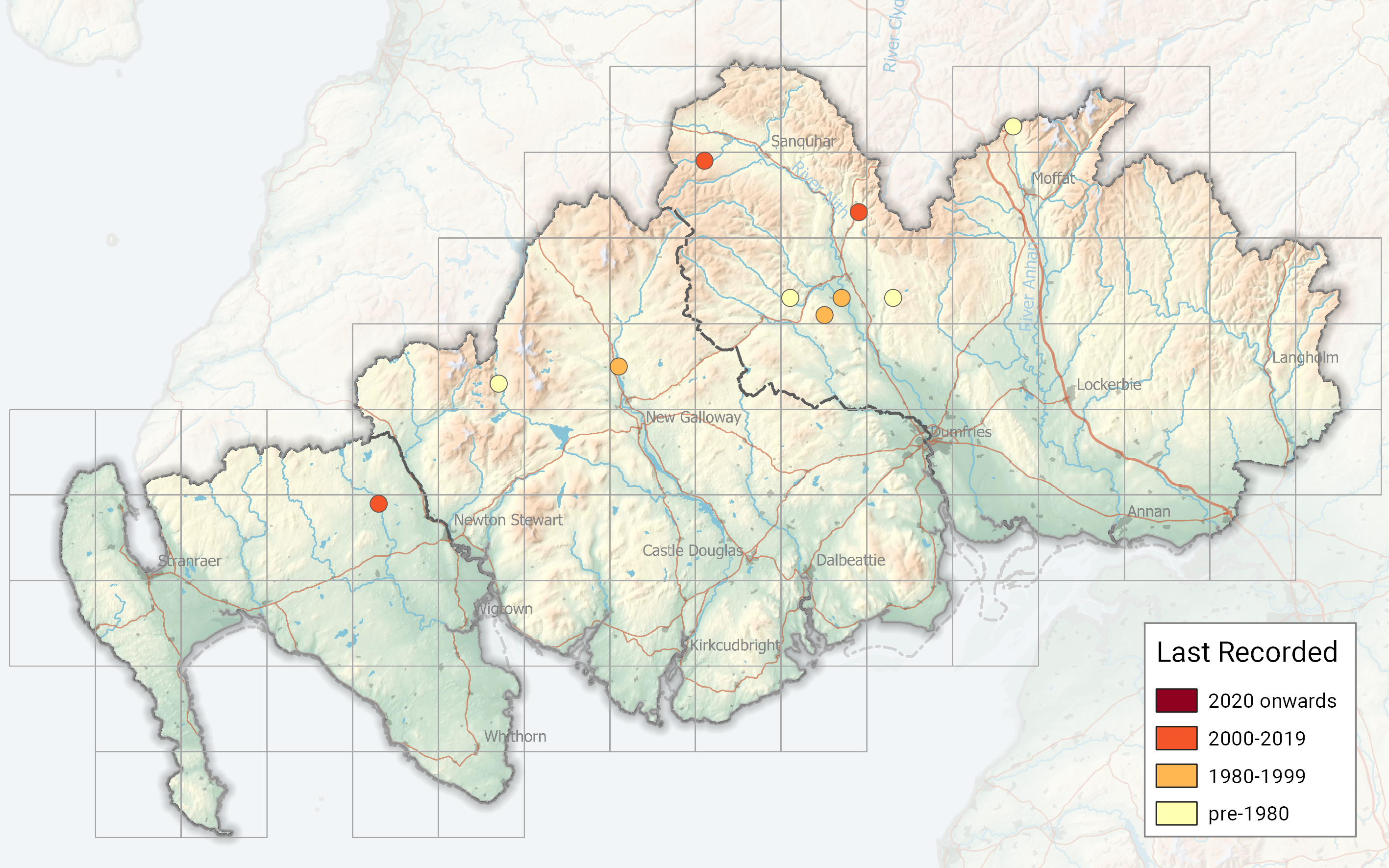Identification
The Ear moths cannot be reliably distinguished from each other by external features and species identification requires examination of the genitalia.
Record undissected specimens as Ear moth agg. Amphipoea oculea agg.
Recording Method.
Attracted to light, also comes to flowers.
Life cycle
One generation. Overwinters as an egg. Larvae are found during May to July. Pupation site unknown.
Larval foodplants
Unknown in the wild.
Habitat
Moorland, unimproved grassland and coastal habitats.
History
Sir Arthur Duncan found the first in Closeburn parish on 28th August 1930, with further records during 1940 and a single in 1943. At Tynron he proved its presence with a number of specimens which are at the National Museums Scotland. There are thirty-one records to date (2010) of the Crinan Ear, which is our rarest “Ear”, and all but one of those are from Dumfriesshire. The lone Kirkcudbrightshire record came from the Silver Flowe in the early 1970s and was checked by R. M. Palmer.



